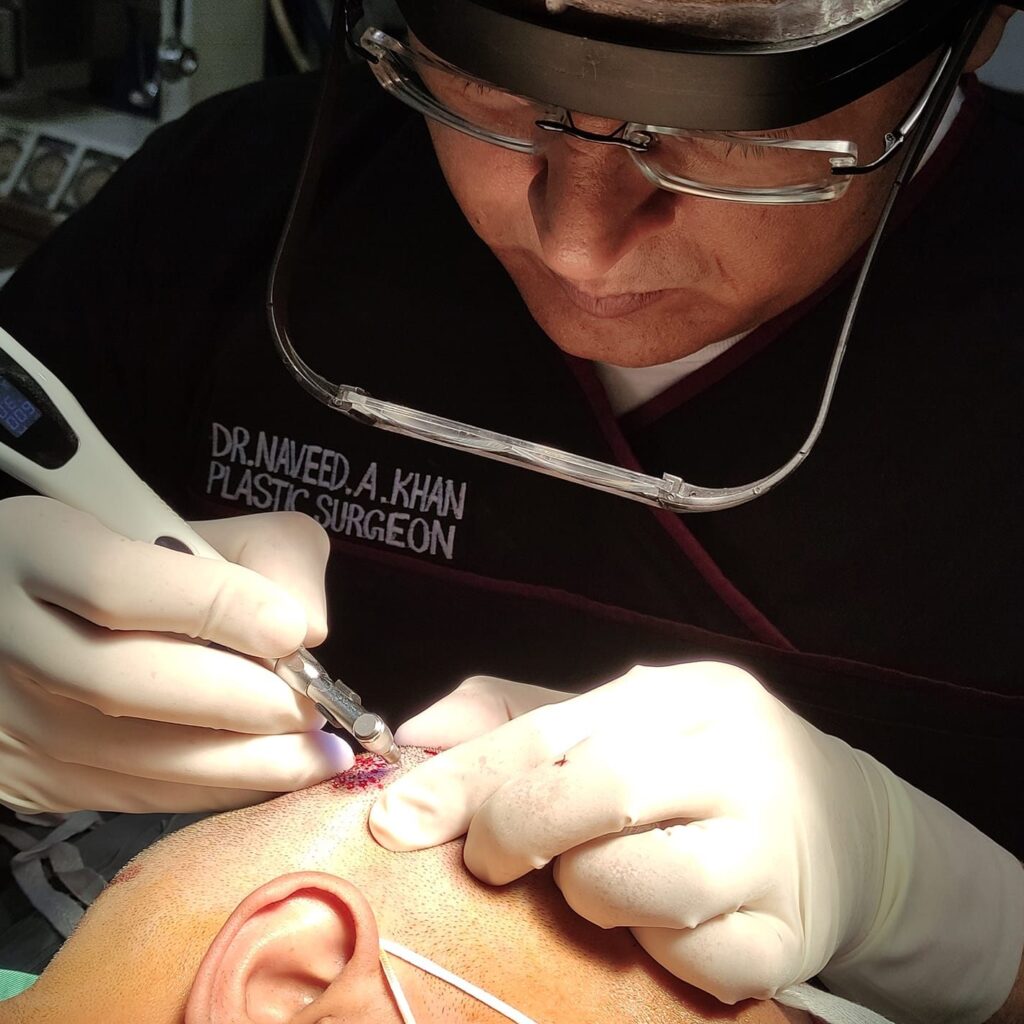 Plastic surgery has come a long way since its inception. It started as a simple reconstructive procedure, aimed at restoring function and appearance to individuals suffering from physical injuries or disfigurements. Today, it has evolved into a multi-billion dollar industry that offers a vast array of cosmetic and reconstructive procedures, aimed at enhancing and transforming people’s lives. One such country where the demand for plastic surgery is growing rapidly is Pakistan. In this article, we will explore the transformative power of plastic surgery, and how it has impacted people’s lives in Pakistan.
Plastic surgery has come a long way since its inception. It started as a simple reconstructive procedure, aimed at restoring function and appearance to individuals suffering from physical injuries or disfigurements. Today, it has evolved into a multi-billion dollar industry that offers a vast array of cosmetic and reconstructive procedures, aimed at enhancing and transforming people’s lives. One such country where the demand for plastic surgery is growing rapidly is Pakistan. In this article, we will explore the transformative power of plastic surgery, and how it has impacted people’s lives in Pakistan.- In Pakistan, plastic surgery has been used to help burn victims restore their appearance and self-esteem. Burns are a common occurrence in the country, particularly in rural areas where fire is still used for cooking and heating. Burn injuries can cause severe scarring and disfigurement, leading to social isolation, psychological trauma, and loss of employment. Plastic surgery can help these individuals restore their appearance, self-esteem, and confidence.
- Another area where plastic surgery has made a significant impact in Pakistan is in the field of gender reassignment surgery. For individuals who identify as transgender, gender reassignment surgery is a life-changing procedure that enables them to live their lives as their true selves. With increasing awareness and acceptance of the LGBTQ community, the demand for gender reassignment surgery has increased in Pakistan.
- In addition to its reconstructive applications, plastic surgery has also been used to enhance physical appearance, giving people the confidence they need to feel good about themselves. From nose jobs and facelifts to tummy tucks and liposuction, plastic surgery has empowered people to change the way they look, feel and live their lives. In Pakistan, the demand for cosmetic surgery is growing, as more and more people become aware of the benefits and possibilities of the procedure.
- Plastic surgery has also been used to correct congenital defects, such as cleft lip and palate, and ear deformities. These conditions can cause significant psychological distress, and can lead to social isolation and discrimination. With the help of plastic surgery, individuals can regain their confidence and live a life free from the effects of their congenital conditions.
- Plastic surgery has also been used to treat traumatic injuries such as facial fractures, hand injuries, and dislocations. These injuries can lead to significant functional and cosmetic problems, and can have a profound impact on a person’s quality of life. With the help of plastic surgery, individuals can regain the ability to perform their daily activities, and restore their appearance.
- In conclusion, plastic surgery has had a transformative impact on people’s lives in Pakistan. From restoring appearance and function to enhancing physical appearance and correcting congenital defects, plastic surgery has empowered people to live their lives to the fullest. The demand for plastic surgery in Pakistan is growing, and it is a testament to the transformative power of this field. The increasing availability of skilled plastic surgeons, state-of-the-art facilities and improved healthcare infrastructure, make it easier for people in Pakistan to access the benefits of plastic surgery. With the continued growth of the plastic surgery industry in Pakistan, it is likely that the transformative power of this field will continue to impact and improve people’s lives for many years to come.
- S. A. Abbasi, S. I. Bhatti, and S. Wasti. “Impact of plastic surgery on psychosocial functioning of burn patients.” Journal of Pakistan Medical Association. 2011 Jan;61(1):60-3.
- S. R. Shahid, and H. Pasha. “Gender reassignment surgery: Pakistani experience.” Journal of Plastic, Reconstructive & Aesthetic Surgery. 2008 May;61(5):612-7.
- A. M. Raja, and M. Saleem. “Impact of Plastic Surgery on Self-Esteem and Quality of Life.” Journal of Pakistan Association of Dermatologists. 2019;29(3):310-315.
- A. R. Khan, et al. “Cleft Lip and Palate in Pakistan: A Ten Year Retrospective Study.” Pakistan Journal of Plastic Surgery. 2017;15(2):15-19.
- S. Z. Khokhar, et al. “Role of plastic surgery in post-traumatic facial fractures.” Pakistan Journal of Medical Sciences. 2013;29(1):150-155.
- S. Khalid, and A. Bari. “Outcome of facial fractures treated by open reduction and internal fixation in a tertiary care hospital in Pakistan.” Journal of Plastic Surgery and Hand Surgery. 2017 Oct;51(5):350-354.
- M. Y. Choudhary, et al. “Reconstruction of external ear deformities with autologous rib cartilage grafts: An experience from Pakistan.” Journal of Plastic, Reconstructive & Aesthetic Surgery. 2011 Dec;64(12):1575-81.
- S. S. Qureshi, et al. “Prevalence of congenital ear anomalies in Pakistani population.” Journal of Plastic Surgery and Hand Surgery. 2014 Dec;48(6):391-4.
- F. Anwar, et al. “Liposuction in Pakistan: A retrospective review of 250 cases.” Journal of Plastic, Reconstructive & Aesthetic Surgery. 2011 May;64(5):636-41.
- K. Q. Chaudhry, et al. “Comparison of open and closed techniques for rhinoplasty in Pakistani patients.” Journal of Pakistan Medical Association. 2017 Jun;67(6):925-929.

